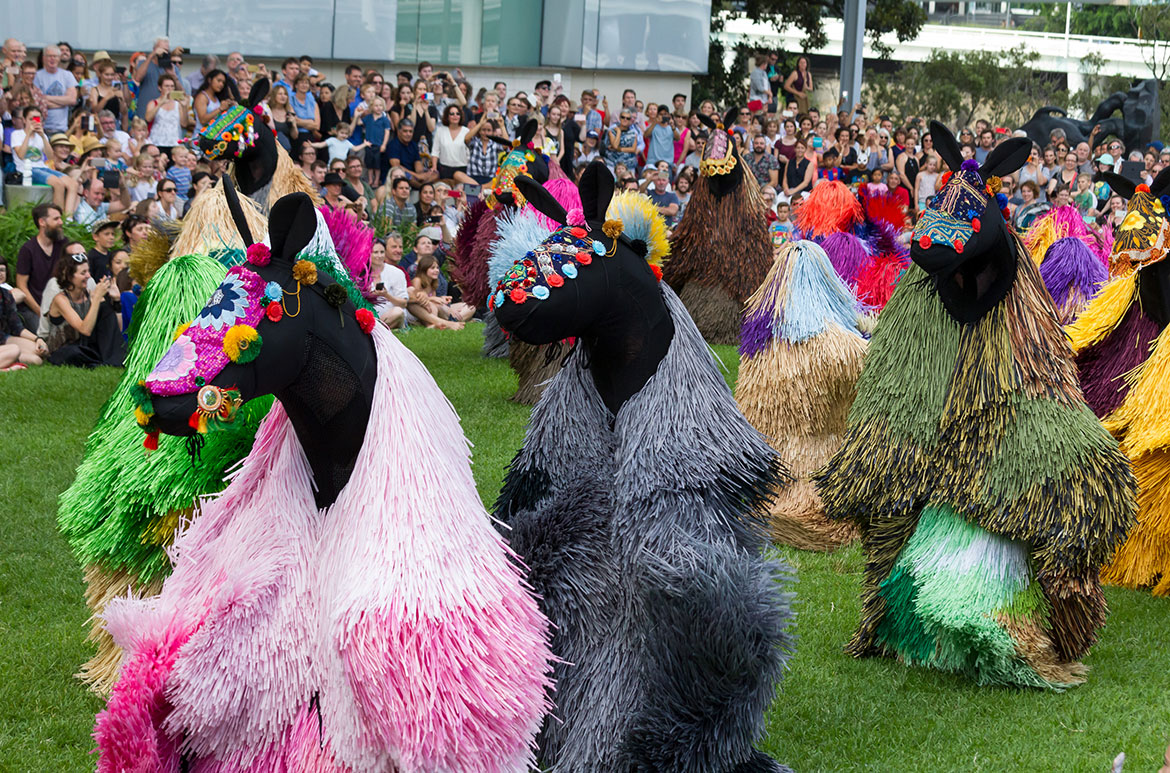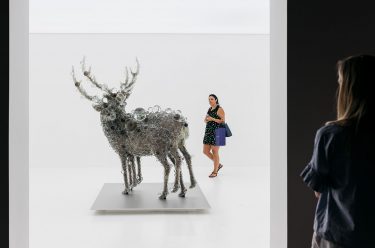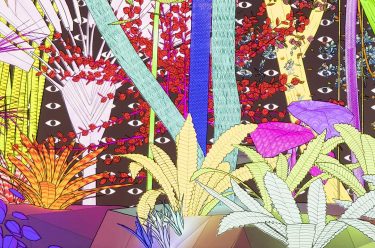Acquired to mark the tenth anniversary of GOMA thanks to the generosity of the Josephine Ulrick and Win Schubert Diversity Foundation, this major work is the first by Nick Cave to enter an Australian public collection. As Geraldine Kirrihi Barlow and Ellie Buttrose write, HEARD invites us to work together, to hear each other, and to celebrate living in a moment of diversity and transformation.
Watch our video and go behind-the-scenes
Born in Missouri in 1959, North American performer and sculptor Nick Cave currently lives and works in Chicago, where he is Professor of Fashion Design (Body and Garment) at the Art Institute of Chicago. Through his art practice, Cave addresses broad issues of ceremony, ritual, myth and self, drawing on his personal experiences. He attracted much attention with HEARD 2012, a large-scale work that involves horse costumes (made to be worn and displayed as sculptural works) and live musicians.
‘Soundsuits’ 1992–ongoing is Cave’s signature series of artworks. He created his first soundsuit in response to the now infamous beating of Rodney King by Los Angeles police the year prior, and his awareness of the danger of being a black man in the United States. Describing the creative process, Cave has spoken of picking up a twig from the ground, something of no value, and adding another twig, and then another, to form a protective suit. The suits offer a way to express individuality while shielding identity markers such as skin colour, gender or sexuality.
Working with a team of assistants in his studio on Chicago’s south side, Cave has created around 500 ‘soundsuits’ so far, using found materials such as twigs, buttons, beads, sequins, synthetic hair, doilies and raffia. He is ‘always trying to use materials in a new way . . . to reintroduce them into the world through embellishment . . . to preserve their original reference but to shift their meaning completely’.1
In performance mode, each horse in HEARD 2012 is brought to life by two dancers who develop its behaviour and character. The work involves a group of individuals working together — first as a pair, and then as the ‘herd’ — to become something larger. It relies on the strengths of both the individual and the group. Similarly, the choreography shifts from free-form improvisation to a trained body of dancers moving in unison; creativity and structure are of equal value, as they are within society as a whole. ‘Hearing’ each other is a hopeful metaphor for an inclusive, energised society sharing a sense of wonder and having the space to realise dreams.
DELVE INTO THE REHEARSALS OF HEARD•BNE 2016

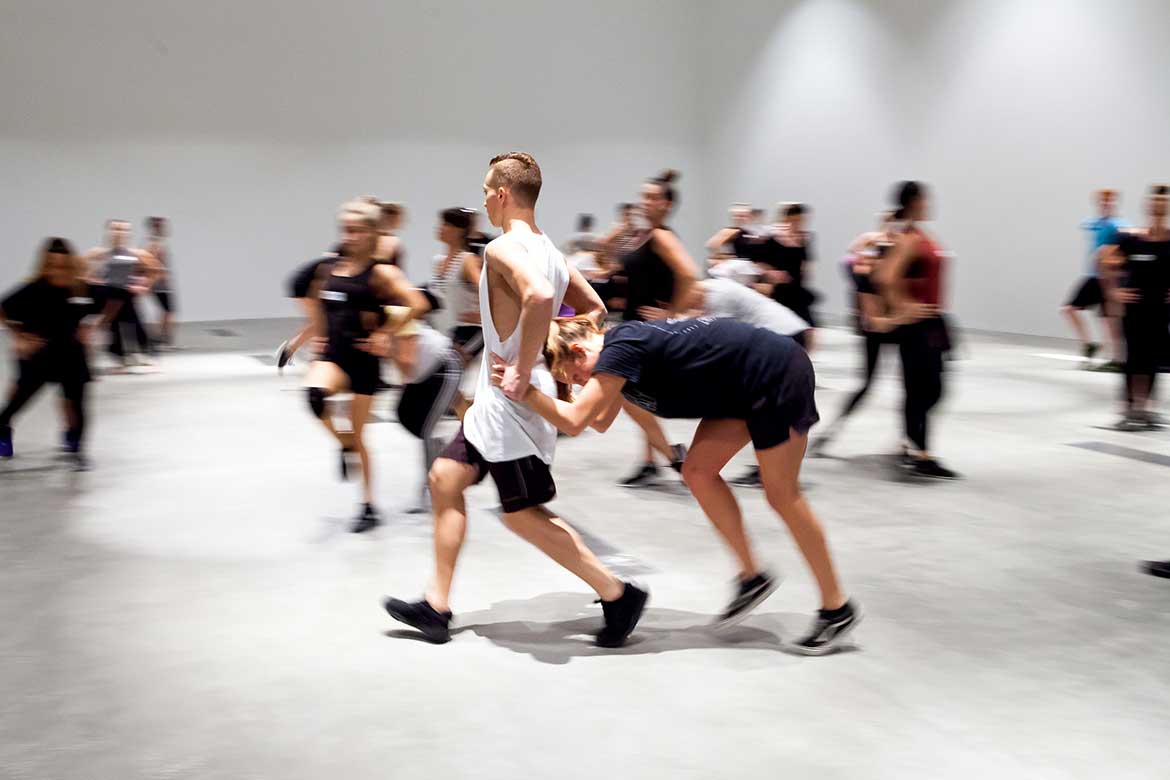
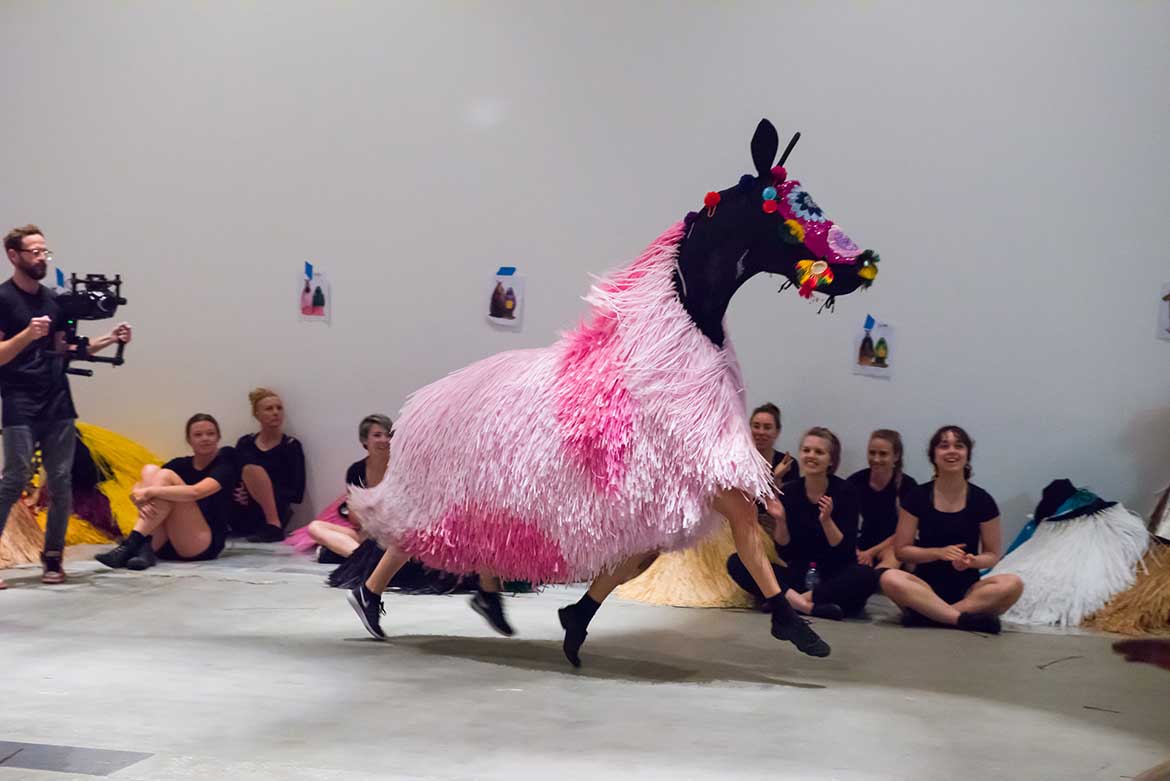


Nick Cave undertook formal dance training in the 1960s with Alvin Ailey (1931–89), who was celebrated for his unique choreography incorporating vernacular street dance styles. Cave provides notes for the arc of choreography and music of the performances, in which the music quickens and dancers shift from graceful gliding to energetic thrashing as the head and body of each horse breaks apart to dance separately in an almost ecstatic state. The intensity of moving colour, sound and rhythmic dancing induces the crowd to let go and move with the music. (In the 1980s and 90s, rave culture became a way for young people to enjoy a sense of unity, in reaction to the political conservatism of then British prime minister Margaret Thatcher and former US president Ronald Reagan. Cave once described 1980s rave culture as having ‘saved his life’.)2
HEARD 2012 brings together the artist’s key concerns in a thought-provoking riot of colour, movement and sound. Its soundsuits — made of vibrantly dyed raffia, with each horse’s face decorated with fabric, beads and other embellishments from across the globe — draw on longstanding performative traditions ranging from the abundant ornamentation of Yoruban ceremonial costume to the elaborate garb of the New Orleans ‘Mardi Gras Indians’. By joining everyday materials together with music, dance and community participation, Nick Cave encourages us to smile and to remember that change and transformation is possible.
Endnotes
1 The artist in conversation with Andrew Bolton, in Nick Cave: Epitome, Prestel Publishing, New York, 2014, p.89.
2 William Morrow, ‘Unfamiliar extremes’, in Laura Caruso (ed.), Sojourn: Nick Cave [exhibition catalogue], Denver Art Museum, Denver, Colorado, 2013, p.7.
Geraldine Kirrihi Barlow is Curatorial Manager, International Art, QAGOMA, and Ellie Buttrose is Associate Curator, Contemporary International Art, QAGOMA
Feature image: Performance of Nick Cave’s HEARD 2012 to mark the tenth anniversary of GOMA, January 2017/ 15 wearable sculptures (six parts each) OR as a performance, 15 wearable sculptures (six parts each), choreography, musical score and video / Purchased 2016 to mark the tenth anniversary of the Gallery of Modern Art with funds from the Josephine Ulrick and Win Schubert Diversity Foundation through the Queensland Art Gallery | Gallery of Modern Art Foundation / Collection: Queensland Art Gallery / © The artist
